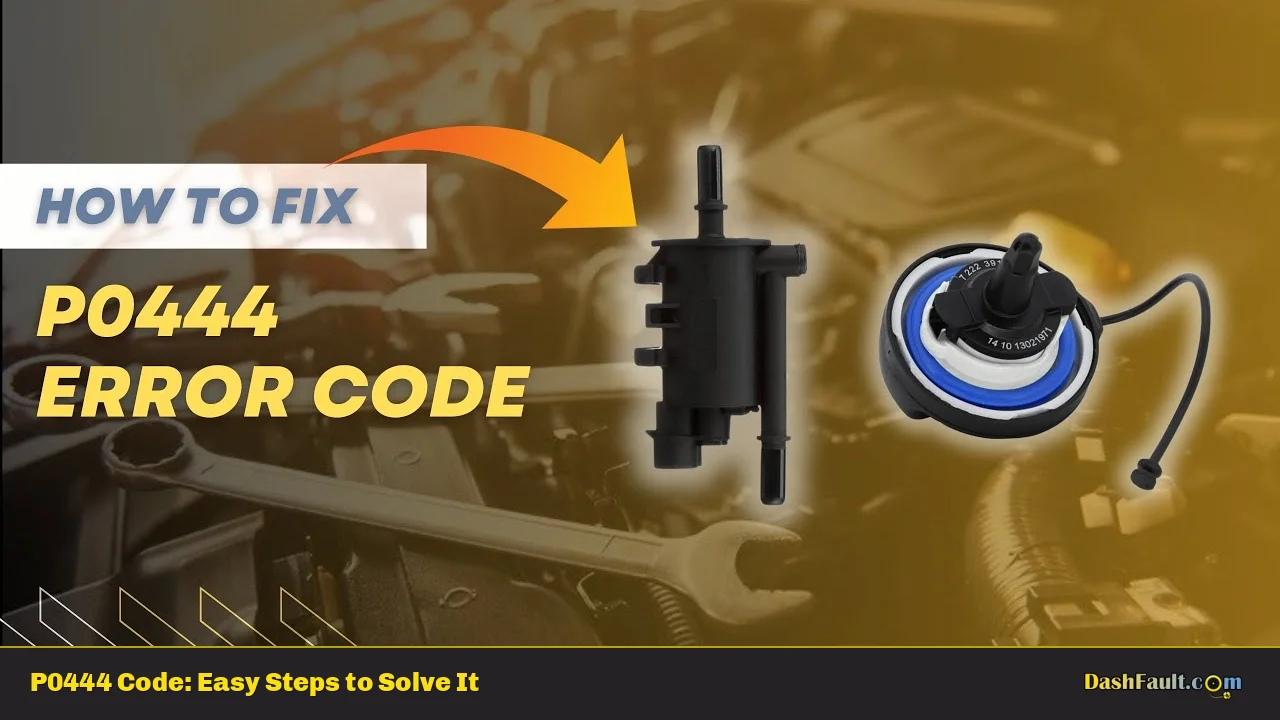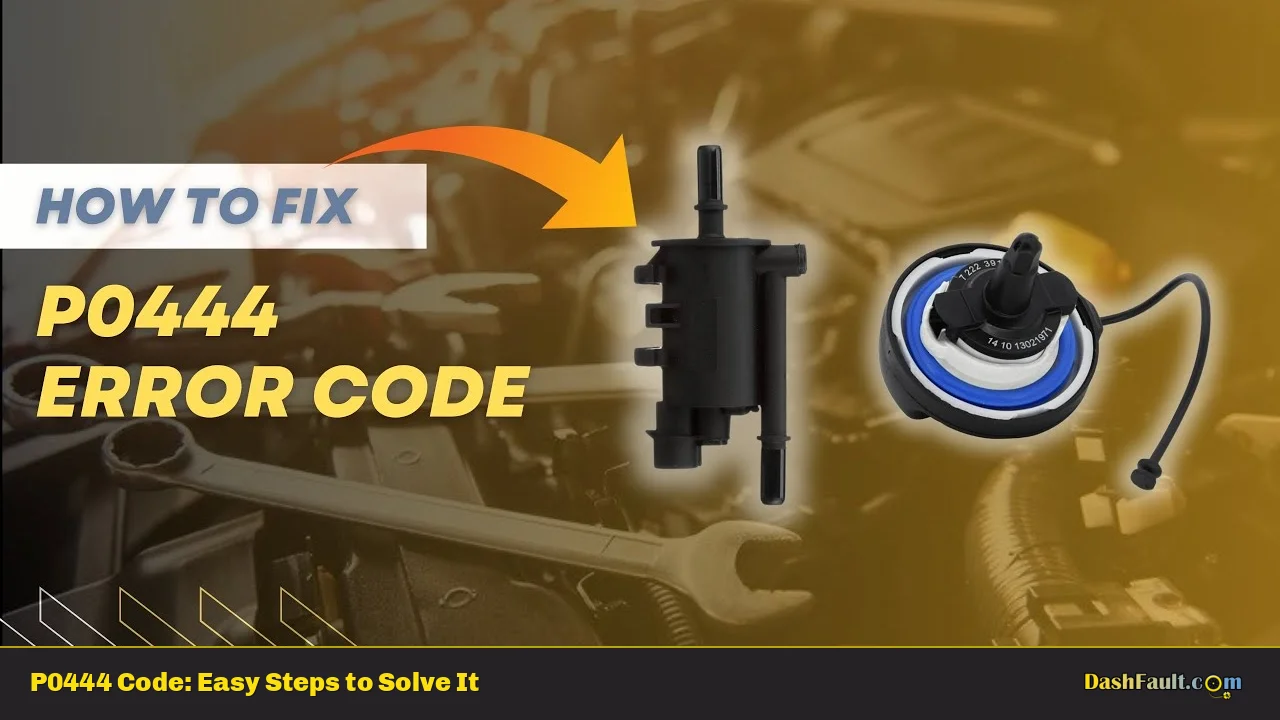The P0444 code is a diagnostic trouble code (DTC) related to the evaporative emission control (EVAP) system in vehicles. When this code is triggered, it indicates that the powertrain control module (PCM) has detected an open circuit in the purge control valve. This article will provide a comprehensive guide to understanding, diagnosing, and resolving the P0444 code.
| P0444 Code Meaning | P0444 Code Common Causes |
|---|---|
| Evaporative Emission Control System Purge Control Valve Circuit Open | Faulty purge control valve |
| EVAP system malfunction | Damaged or corroded wiring in the purge valve circuit |
| Open circuit in the purge valve electrical system | Loose or disconnected electrical connectors |
| PCM-detected issue with purge valve operation | Failed PCM (rare) |
Understanding the EVAP System and Purge Control Valve
The EVAP system is designed to prevent fuel vapors from escaping into the atmosphere. The purge control valve, a crucial component of this system, regulates the flow of fuel vapors from the charcoal canister to the engine intake manifold. When the P0444 code is set, it means the PCM has detected an open circuit in the electrical system controlling this valve.
Symptoms of a P0444 code may include:
- Illuminated check engine light
- Slight decrease in fuel efficiency
- Occasional rough idling or hesitation during acceleration
- Fuel odor (in some cases)
To understand why these symptoms occur, it’s important to know how the purge control valve functions. When working correctly, the valve opens at specific times to allow fuel vapors to be burned in the engine. If the circuit is open, the valve may remain closed, preventing proper vapor purging and potentially causing the observed symptoms.
Diagnosing the P0444 Code
Proper diagnosis of the P0444 code requires a systematic approach. Follow these steps to identify the root cause of the issue:
- Connect an OBD-II scanner to verify the P0444 code and check for any additional codes.
- Inspect the purge control valve and its electrical connector for visible damage or corrosion.
- Check the wiring harness between the purge control valve and the PCM for any signs of damage, fraying, or exposed wires.
- Use a multimeter to test the resistance of the purge control valve. The typical range is between 22-30 ohms, but consult your vehicle’s service manual for exact specifications.
- With the ignition on, use a voltmeter to check for power at the purge control valve connector. You should see battery voltage on one pin.
- Use a scan tool to command the purge valve on and off while monitoring the voltage at the control pin. It should switch between ground and battery voltage.
- If all tests pass, consider using a smoke machine to check for any leaks in the EVAP system.
Warning: Always follow proper safety procedures when working with electrical systems and fuel components. If you’re unsure about any step, consult a professional mechanic.
Solving the P0444 Code
Once you’ve identified the cause of the P0444 code, you can proceed with the appropriate solution:
- Faulty Purge Control Valve
If the purge control valve has failed, it will need to be replaced. This is often the most common solution for the P0444 code.
Steps to replace the purge control valve:
- Locate the purge control valve (usually near the intake manifold or charcoal canister)
- Disconnect the electrical connector and any attached hoses
- Remove the mounting bolts and the old valve
- Install the new purge control valve
- Reconnect the hoses and electrical connector
- Clear the code and test drive the vehicle
Estimated cost: $50-$200 for the part, plus labor if not done yourself.
- Wiring Issues
If the diagnosis reveals damaged wiring or connectors, repairs will be necessary.
Steps to repair wiring:
- Identify the damaged section of wiring
- Cut out the damaged portion
- Splice in new wiring using appropriate gauge wire
- Use heat-shrink tubing or electrical tape to insulate the repair
- Secure the repaired wiring to prevent future damage
Estimated cost: $20-$100 for materials, plus labor if not done yourself.
- Loose or Disconnected Connectors
If connectors are loose or disconnected, simply reconnecting and securing them may solve the issue.
Steps to address connector issues:
- Locate the relevant connectors in the purge valve circuit
- Disconnect and inspect for corrosion or damage
- Clean connectors if necessary using electrical contact cleaner
- Reconnect, ensuring a tight and secure fit
- Use dielectric grease to prevent future corrosion if exposed to the elements
Estimated cost: Minimal, unless replacement connectors are needed.
- PCM Issues
In rare cases, the PCM itself may be at fault. This is typically only considered after all other potential causes have been ruled out.
Warning: PCM replacement or reprogramming should only be performed by a qualified professional with the proper equipment and software.
Estimated cost: $500-$1000 or more, depending on the vehicle and whether a new or remanufactured PCM is used.
Preventing Future P0444 Codes
To minimize the chances of encountering the P0444 code in the future:
- Regularly inspect EVAP system components for signs of wear or damage
- Keep electrical connections clean and protected from the elements
- Address any fuel system or engine performance issues promptly
- Use high-quality fuel and follow recommended maintenance schedules
Frequently Asked Questions About P0444
- Can I drive my vehicle with a P0444 code?
While the vehicle may still be drivable, it’s best to address the issue promptly to prevent potential damage and ensure proper emissions control. - Will the P0444 code clear itself?
The code may clear if the issue resolves temporarily, but it will likely return if the underlying problem isn’t fixed. - How does the purge control valve affect fuel economy?
A malfunctioning purge control valve can lead to decreased fuel efficiency by preventing proper fuel vapor management. - Can a stuck-open purge valve cause the P0444 code?
No, a stuck-open valve would typically trigger a different code. P0444 specifically indicates an open circuit issue. - Is the P0444 code related to emissions testing?
Yes, this code is related to the emissions control system and may cause a vehicle to fail an emissions test. - How long does it take to diagnose and fix a P0444 code?
Diagnosis typically takes 1-2 hours, while repairs can range from 30 minutes to several hours depending on the cause and solution. - Can a faulty gas cap cause a P0444 code?
While a faulty gas cap can trigger EVAP-related codes, it’s unlikely to cause P0444 specifically, which relates to the purge valve circuit. - Are there any performance issues associated with the P0444 code?
Most vehicles won’t exhibit significant performance issues, but you may notice slight hesitation or rough idling in some cases.
In conclusion, the P0444 code, while not typically causing immediate drivability issues, should be addressed promptly to maintain proper emissions control and prevent potential long-term problems. By following the diagnostic steps outlined in this guide, most DIY mechanics can identify and resolve the issue. However, if you’re unsure about any aspect of the diagnosis or repair process, it’s always best to consult with a qualified professional mechanic. Remember, proper maintenance and timely repairs are key to keeping your vehicle running efficiently and minimizing the occurrence of trouble codes like P0444.

